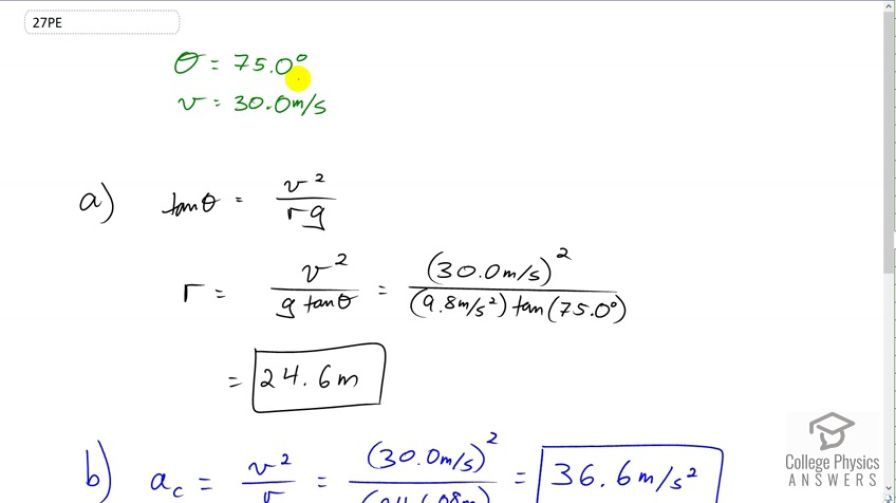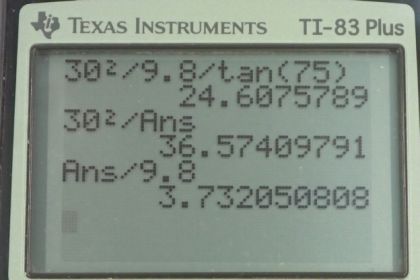- What is the radius of a bobsled turn banked at 75.0° and taken at 30.0 m/s, assuming it is ideally banked?
- Calculate the centripetal acceleration.
- Does this acceleration seem large to you?
a)
b)
c) . This seems reasonable as it would not cause injury.
Solution video
OpenStax College Physics, Chapter 6, Problem 27 (Problems & Exercises)

Calculator Screenshots
Comments
Hello Shaun,
I've noticed in a few other problems where you divide the denominator differently. I am confused as to when we should be doing our calculations as you have done above because the equation to find r= v^2/Tan(theta)g . Thanks.
Hi Seyda,
Thank you, this is a good question. The issue is about personal preference about how to enter division into the calculator, and there are two ways which are equally correct. The way I do it is perhaps a bit lazier since I prefer not to enter brackets to surround several factors in the denominator. Instead, I divide separately by each factor in the denominator. Perhaps it's best to illustrate with an example: can be entered into the calculator as either:
option 1 (which I think might be your preference): 12 / ( 2 * 3 ), or option 2 (the way I usually do it): 12 / 2 / 3. Both techniques give the same answer of 2, and the difference is entirely personal preference. Option 1 requires pressing buttons eight times to enter the expression, whereas option 2 requires only 6 button presses. The calculator follows standard order of operations, which is often taught as BEDMAS, but this acronym is slightly misleading in this context since it suggests D comes before M, whereas in fact consecutive division and multiplication statements are evaluated left to right.
Hope this helps,
Shaun


